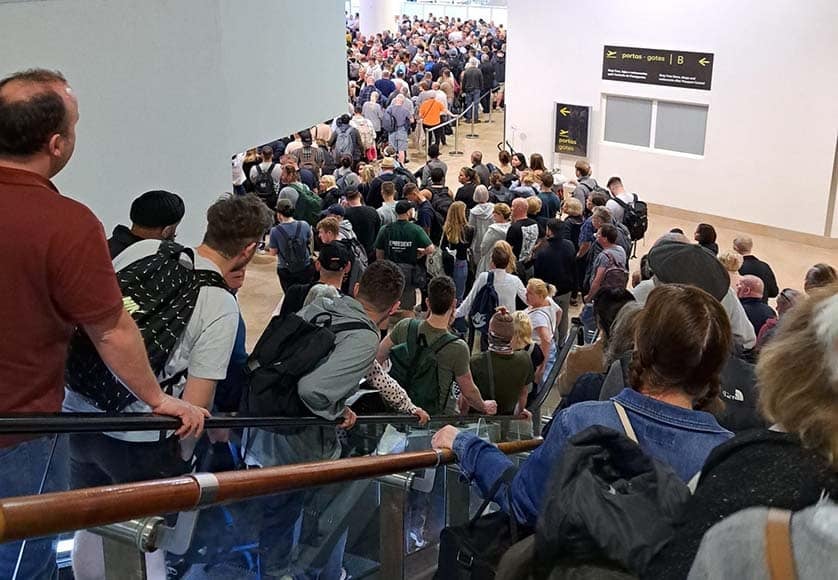
Among the books that Montreal’s Parc-Extension bookstore lights up on its shelves are rows of books in Tamil, Bengali and Gujarati. In Quebec, this year the old capital libraries will be working on two new mini-collections, one in Arabic and one in Portuguese. Major public libraries in Quebec secretly speak several languages. And intend to find out more.
At the Parc-Extension, from his library just behind the railway, librarian Alex Bourdon-Charest speaks proudly of the nine small foreign-language collections he curates, as well as those in French and English.
“We have about 3,500 documents in Greek, because the people of the neighborhood lived very long ago. Next come the South Asian languages, including Tamil, Urdu, Hindi, etc. We have Spanish. And the smallest collection is in Italian, with only a few hundred books.”
Adds Isabelle Morissette, of the Intercultural Library in Côte-des-Neiges—the only one in Montreal, that offers books in Tagalog, from Filipinos.
About 5% of the City of Montreal’s collection is available in languages other than English or French, and about 50% of the libraries have multilingual collections. The budget allocated to the purchases of these groups is less than 5% of expenses.
When books follow people
Adding collections in foreign languages is “a general trend for libraries in the West,” asserts Eric Therrien, director of the Gabriel Roy Library and Collections in Quebec. According to Statistics Canada, Quebec had 15.3% of new immigrants in 2021. “There is a desire to match the composition of the population. And we know that a library can be a welcoming place for newcomers,” says Mr. Therrien.
The library’s grand library saw this trend coming: when it opened in 2005, it had a multilingual collection; 11 languages, including German, Haitian Creole, Portuguese, Russian, Romanian, and Vietnamese. in 1any Last February, there were 20,405 documents, and it is planned to borrow 24,000 in 2022-2023.
This group is now in complete makeover. “We are migrating everything online. So the collections will be accessible to more people. We will only keep on-site collections in Spanish, Arabic and Mandarin,” explains Mélanie Dumas, Global Collection Manager, the most popular, which makes up 70% of physical document loans.
In Quebec, “we’ve seen a 6-7% increase in foreign language loans since last year,” explains Mr. Therrien. The Spanish language has been developing steadily for about eight years. We have 7,000 documents in Spanish out of 1.3 million documents.”
“We started only in the central library, continues the director. As it grew, we developed it in the neighborhoods where the Spanish-speaking population lived: Limoilou, Vanier, Les Rivières. There, we should have about ten libraries out of 26 that have Spanish in them. Lending allows Libraries circulate these documents.
Indian cookbooks in hindi
The development of these small multilingual groups is thought differently. “I don’t want to reintroduce Agatha Christie or Harry Potter,” said Mr. Bourdon-Charest. “In French, we buy a lot of translations. For foreign languages, I ask booksellers to find me bestsellers in the original languages.”
There are fewer specialized areas – no math textbooks, for example. Bring popular feature documentaries, biographies, and health and diet books. And cookbooks, because they are always popular. And children’s books. »
These children’s books are especially popular in Quebec bookstores. So much so that 50% of Spanish documents target them. “It’s a lot more than the French, where we’ll have 35% documents for young people versus 65% for adults,” said Mr. Therrien. Other libraries surveyed duty In the course of this article did not encounter the same phenomenon.
“We will also offer translated books to Quebec authors, because these collections are integration tools,” adds Eric Therrien. Tour guides in Quebec City, too; Anything that can enhance learning about the local culture. »
Rate a book you know nothing about
One of the challenges for libraries incorporating new languages, explains Mary Jo Hamill, a librarian at the Center for Social Services in Montreal, “is the intellectual processing we have to do with books.” Creating a bibliographic record, if it does not exist in common North American databases, can be a challenge.
“You have to ask yourself how you are going to represent the document in the catalog so that people can access it and find it. Every language has its challenges, and the reality is different from one language to another. We don’t always have staff who speak these languages.” And Those who are able to do intellectual processing while respecting the rules. »
Even distinguishing between fictional and documentary works, because the system of classification then differs, and for certain cultures it is not easy, the detailsI Hamel. Books don’t have the same symbols or the same types everywhere. The separation between true story and fiction is not a universal concept. »
There is also the matter of other alphabets, such as Urdu or Tamil. In Montreal, we don’t catalog data in foreign languages—you’ll need the right keyboards to search for them, then. »
“In Montreal, we do transliteration: we try to translate the sounds of these languages into the Roman alphabet, knowing that not everyone hears the sounds the same way,” explains the person who also manages the coordinated acquisitions for Montreal. It’s a lot of energy and knowledge. There’s a lot, a lot of work behind this. groups … “
In Montreal, statistically, these groups come in less than other documents. “But I see its effect on people who come to a public library for the first time,” says Bourdon-Christ. It creates facility, it makes the library a welcoming place. This personalizes them as well, since the languages are not the same depending on the neighborhood.






